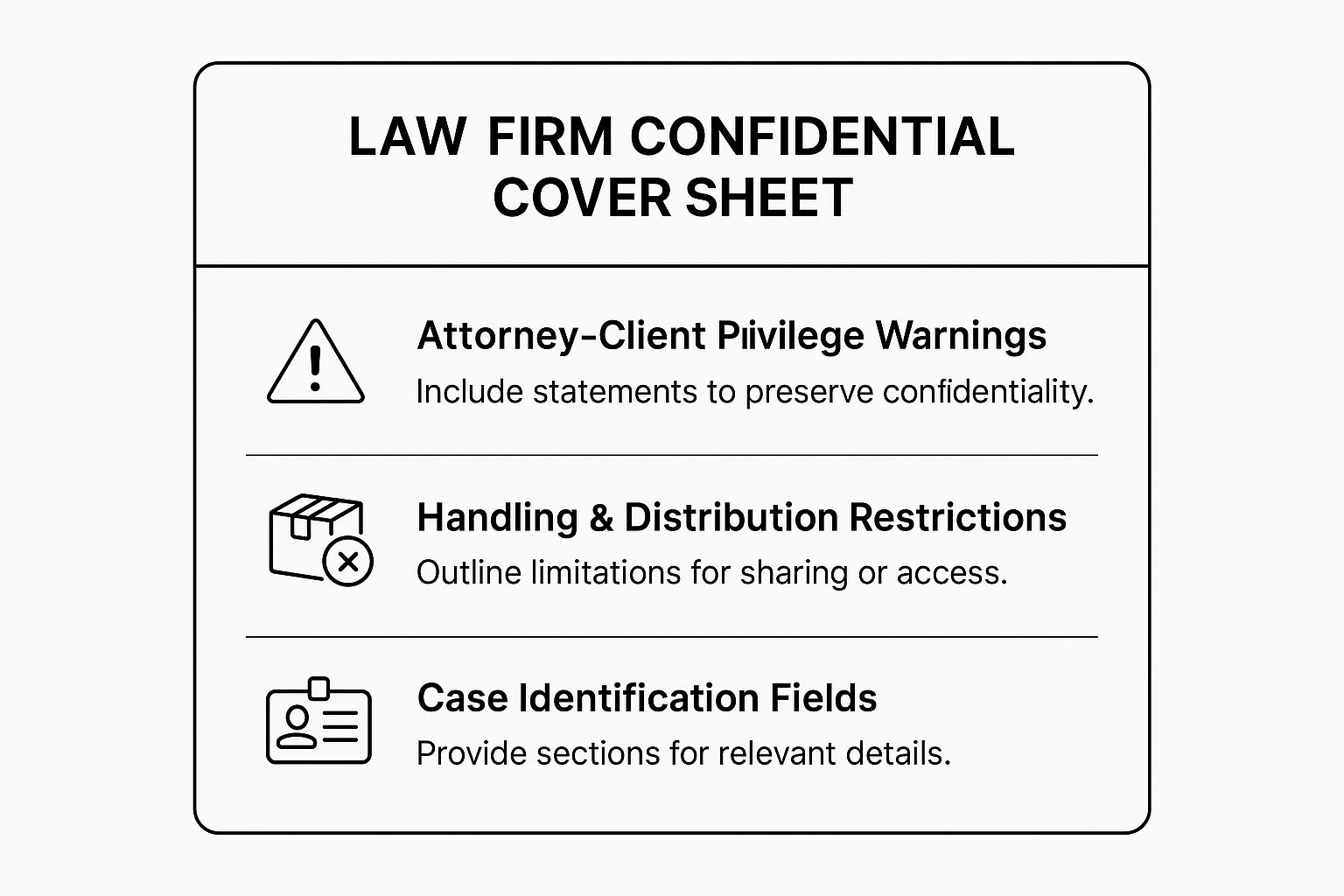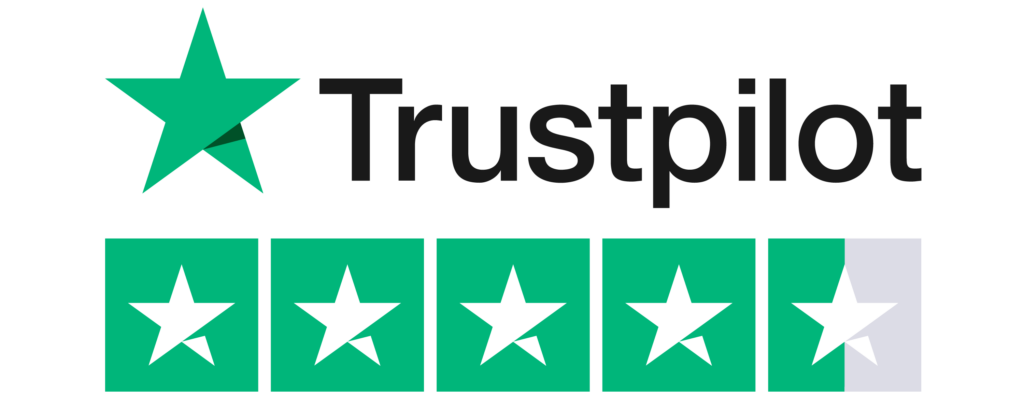In an era of constant data exchange, sending a sensitive document without a proper confidential cover sheet is like sending a postcard with your bank details. It's a risk most can't afford, especially when mishandling information can lead to severe consequences. A standard fax cover page simply announces the sender and recipient; a confidential one serves as a legal and procedural shield. It dictates handling instructions, asserts privilege, and helps ensure compliance with regulations.
The importance of adequately protecting sensitive information, whether through secure cover sheets or digital protocols, is underscored by strict regulations such as the GDPR guidelines for data protection. This guide moves beyond generic templates to provide a curated list of seven specialized confidential cover sheet types tailored for high-stakes industries. We'll explore the specific features that make each template effective, analyze their practical applications in real-world scenarios, and offer guidance on how to implement them correctly.
Whether you're a lawyer protecting case files, a healthcare professional transmitting patient records under HIPAA, or an executive sharing strategic plans, using the right cover sheet is your first line of defense in information security. Let's dive into the essential templates that ensure your private information stays that way.
1. Law Firm Confidential Cover Sheet
In the legal field, maintaining confidentiality is not just a best practice; it is a fundamental ethical and legal obligation. A Law Firm Confidential Cover Sheet is an indispensable tool designed specifically to uphold this standard. It acts as the first line of defense in protecting attorney-client privilege and other sensitive information from inadvertent disclosure. This specialized cover sheet goes beyond a standard fax header by including explicit legal warnings and handling instructions.
When dealing with sensitive legal documents like family law forms, a robust confidential cover sheet is crucial. These documents often contain highly personal information that must be protected, and the cover sheet immediately signals the privileged nature of the communication to anyone who might receive it, whether intended or not. It serves as a clear, unambiguous statement that the attached materials are legally protected and not for general distribution.
Key Components and Use Cases
The primary function of this cover sheet is to assert privilege. This is particularly critical during discovery in litigation, where thousands of documents are exchanged. A clear cover sheet can prevent a privileged document from being accidentally produced to opposing counsel, which could lead to a waiver of that privilege.
- BigLaw Discovery Productions: In large-scale litigation, paralegals and junior associates often manage document review. A standardized confidential cover sheet ensures every privileged document is clearly marked, reducing the risk of human error.
- Corporate Legal Departments: When in-house counsel communicates with executives or outside firms, this cover sheet adds a formal layer of protection, reinforcing the confidential nature of legal advice.
- Litigation Support Vendors: When sending documents to third-party vendors for printing or processing, the cover sheet instructs them on the required secure handling protocols.
This infographic summarizes the essential elements that make a legal confidential cover sheet effective.

These three sections work together to create a formidable barrier against accidental disclosure, clearly defining the document's status, recipient, and handling requirements.
For a deeper look into how legal privilege works and why protecting it is so important, the video below provides a helpful overview.
2. Medical Records Confidential Cover Sheet
In healthcare, protecting patient information is a legal and ethical mandate governed by strict regulations like the Health Insurance Portability and Accountability Act (HIPAA). A Medical Records Confidential Cover Sheet is a specialized document designed to meet these rigorous standards. It serves as a critical safeguard, ensuring that Protected Health Information (PHI) remains secure during transmission between providers, insurers, and other authorized entities. This type of confidential cover sheet explicitly states the sensitive nature of the enclosed documents and includes warnings against unauthorized access or disclosure.

When transferring medical records, such as when you need to fax Medicare forms, using a HIPAA-compliant cover sheet is non-negotiable. The cover sheet acts as a formal declaration, immediately alerting the recipient to their responsibility in handling the data. It helps prevent accidental breaches by clearly marking the communication as containing confidential medical data, which carries significant legal protections and penalties for misuse.
Key Components and Use Cases
The core purpose of this cover sheet is to enforce HIPAA compliance and protect patient privacy. It provides a clear, documented trail of how sensitive information is being shared, which is essential for audits and maintaining patient trust. The explicit warnings and handling instructions are vital for preventing PHI from being left unattended or seen by unauthorized individuals.
- Hospital Patient Record Transfers: When a patient is transferred between facilities, their records must follow. This cover sheet ensures the receiving hospital understands the confidential nature of the documents from the moment they arrive.
- Insurance Claim Documentation: Submitting medical records to an insurance company for claim processing requires strict adherence to privacy rules. The cover sheet reinforces the confidential context of the submission.
- Specialist Consultation Referrals: When a primary care physician refers a patient to a specialist, sharing relevant medical history is necessary. This sheet ensures the information is handled securely during the referral process.
- Medical Research Data Sharing: Researchers sharing anonymized or patient-authorized data must use cover sheets to document the transfer and remind all parties of their confidentiality obligations under research protocols.
These use cases highlight how a dedicated medical confidential cover sheet is a fundamental component of secure healthcare operations. By standardizing its use, healthcare organizations can significantly reduce the risk of privacy violations and demonstrate a commitment to protecting patient information at every step.
3. Corporate Executive Confidential Cover Sheet
For C-suite executives and senior management, the flow of sensitive information is constant and carries significant weight. A Corporate Executive Confidential Cover Sheet is a specialized template designed to safeguard strategic plans, proprietary data, and other high-stakes business information. Popularized by top-tier consulting firms like McKinsey & Company, Deloitte, and PwC, this cover sheet functions as a formal declaration of confidentiality, ensuring that communications maintain their protected status both internally and with external stakeholders like investors or partners.

This type of confidential cover sheet immediately conveys the gravity and restricted nature of the attached documents. It sets a professional, security-conscious tone and establishes clear handling expectations for recipients, which is vital when dealing with information that could impact stock prices, competitive advantages, or corporate reputation. It is an essential component of sound corporate governance and risk management.
Key Components and Use Cases
The primary role of this cover sheet is to prevent the unauthorized dissemination of mission-critical corporate intelligence. It clearly marks documents that are intended only for a select group of individuals, creating an audit trail and reinforcing a culture of confidentiality at the highest levels of an organization.
- Fortune 500 Board Communications: When distributing materials for board meetings, this cover sheet ensures that discussions about corporate strategy and financial performance remain strictly within the boardroom.
- Merger and Acquisition (M&A) Due Diligence: During M&A activities, vast amounts of sensitive financial and operational data are shared. The cover sheet acts as a constant reminder of the non-disclosure agreements in place.
- Strategic Planning Documents: Sharing five-year plans, market entry strategies, or R&D roadmaps requires a robust layer of protection that this cover sheet provides.
- Executive Compensation Discussions: Communications regarding executive pay, bonuses, and severance packages are highly sensitive and require the utmost discretion, which a formal cover sheet helps enforce.
These specific applications demonstrate how the executive cover sheet is more than a formality; it's a critical tool for protecting a company's most valuable intellectual assets.
4. Government Agency Confidential Cover Sheet
For government entities, from local municipalities to federal departments, the protection of information is a matter of national security, public trust, and legal mandate. A Government Agency Confidential Cover Sheet is a specialized, highly regulated document designed to meet these stringent requirements. It serves as an official notice that the accompanying documents contain sensitive, classified, or controlled unclassified information (CUI) and are subject to strict handling protocols and legal protections.
This type of confidential cover sheet is non-negotiable when transmitting information like sensitive law enforcement data or confidential citizen records. For instance, when the IRS handles taxpayer information or the FBI circulates investigation files, this cover sheet is the first critical step in a chain of custody designed to prevent unauthorized access. It immediately signals the document's status, ensuring that anyone who encounters it understands the severe penalties associated with its mishandling.
Key Components and Use Cases
The primary function of this cover sheet is to enforce compliance with government-wide information security regulations, such as those governing classified national security information or specific agency rules. The sheet often includes specific classification markings (e.g., "SECRET," "TOP SECRET," "CUI"), handling caveats, and declassification instructions, which are absent from standard business cover sheets.
- Law Enforcement Investigations: Local police departments and federal agencies like the FBI use these sheets to transmit investigative reports, witness statements, and evidence logs, ensuring the information remains protected under active investigation exemptions.
- National Security and Diplomacy: The State Department and intelligence agencies rely on these cover sheets for diplomatic cables and intelligence reports, where a breach could have significant international consequences.
- Regulatory and Citizen Data: Agencies like the IRS or Social Security Administration use these to protect Personally Identifiable Information (PII) from disclosure, complying with laws like the Privacy Act.
A key element is the "need-to-know" principle. The cover sheet often specifies the intended recipients by name, title, or group, reinforcing that access is strictly limited. It's not just about confidentiality; it's about controlled, authorized access, which is a cornerstone of government information security. Regular security awareness training within these agencies reinforces the importance of correctly using this vital tool to safeguard sensitive data.
5. Financial Institution Confidential Cover Sheet
In the financial sector, the security of information is paramount, governed by strict regulations like the Gramm-Leach-Bliley Act (GLBA) and GDPR. A Financial Institution Confidential Cover Sheet is a specialized document designed to safeguard nonpublic personal information (NPI) and other sensitive financial data. It serves as a critical first step in a secure communication protocol, immediately alerting any recipient to the highly sensitive and regulated nature of the accompanying documents. This type of confidential cover sheet explicitly states the legal protections and confidentiality requirements associated with the information.
When transmitting documents such as commercial loan applications or customer account details, this cover sheet is non-negotiable. It provides a formal, documented assertion that the contents are protected under financial privacy laws. This is crucial not only for compliance but also for maintaining customer trust and mitigating the substantial risks of data breaches, which can result in severe financial penalties and reputational damage.
Key Components and Use Cases
The primary role of this cover sheet is to enforce regulatory compliance and prevent unauthorized access to sensitive financial data. By including specific citations to relevant regulations, it reinforces the legal obligations for secure handling for both internal staff and external partners. It acts as a clear directive that the attached information must be handled according to strict security protocols.
- Investment Bank Communications: When sharing proprietary research reports or trading data between departments or with institutional clients, the cover sheet ensures the information's confidentiality is maintained, protecting intellectual property and market-sensitive information.
- Commercial Lending: During the underwriting process for commercial loans, vast amounts of sensitive business and personal financial data are exchanged. A robust cover sheet protects this information as it moves between analysts, loan officers, and credit committees.
- Regulatory Examinations: When submitting materials to regulatory bodies like the SEC or FDIC, this cover sheet formally marks the documents as confidential business information, helping to control their distribution within the agency.
- Customer Information Sharing: For tasks like processing wealth management transfers or sharing account details with authorized third parties, the cover sheet provides a clear, compliant wrapper that documents the confidential nature of the transaction.
6. Technology Company Confidential Cover Sheet
In the hyper-competitive technology sector, intellectual property (IP) is the most valuable asset. A Technology Company Confidential Cover Sheet is a specialized document designed to protect this IP, including proprietary algorithms, source code, user data, and trade secrets. It functions as an explicit and immediate warning that the transmitted information is highly sensitive and subject to strict non-disclosure agreements and internal security policies.
This type of cover sheet is distinct from a generic one because it addresses the unique risks of the tech industry. For example, when sharing documents like Apple product development files or startup investor pitch materials, the stakes are incredibly high. A leak could compromise a product launch or derail funding. This confidential cover sheet acts as a crucial first barrier, clearly communicating the proprietary nature of the documents and the severe consequences of unauthorized access or distribution.
Key Components and Use Cases
The primary role of this cover sheet is to formally classify information and enforce handling protocols. In an environment of rapid innovation and collaboration, it ensures that sensitive data, whether it's Google's internal research or Microsoft Azure's customer data, is immediately recognized as confidential. This is essential for preventing accidental leaks through email, cloud-sharing platforms, or third-party vendor communications.
- Protecting Intellectual Property: When sharing API documentation or beta software with partners, this cover sheet legally reinforces the confidential nature of the technology, helping to protect it from reverse engineering or unauthorized use.
- Securing Investor Communications: Startups use these cover sheets when sending pitch decks and financial projections to venture capitalists, ensuring their innovative ideas and business strategies remain private.
- Managing Cross-Functional Projects: As product, engineering, and marketing teams collaborate on new features, a standardized confidential cover sheet helps maintain information security boundaries and prevents sensitive details from leaking prematurely.
This infographic summarizes the critical elements that define a robust tech company cover sheet.
These three sections work in concert to protect a company's most vital assets by clearly stating the document's classification, intended audience, and strict usage limitations.
For a deeper understanding of intellectual property and why it's the lifeblood of a technology company, the following video offers a comprehensive explanation.
7. Human Resources Confidential Cover Sheet
In the Human Resources (HR) domain, the management of sensitive employee data is governed by strict privacy laws and company policies. An HR Confidential Cover Sheet is a critical administrative control used to safeguard this information. It serves as a formal declaration that the accompanying documents contain personally identifiable information (PII) or other restricted data, ensuring they are handled with the appropriate level of care and discretion. This specialized cover sheet is essential for maintaining compliance and fostering a culture of trust and privacy within the organization.
The need for a dedicated HR confidential cover sheet is amplified when transmitting documents like employee performance evaluations, salary details, or benefits enrollment forms. These records contain highly sensitive personal and financial information. The cover sheet acts as an immediate visual cue, alerting any recipient to the confidential nature of the documents and the specific handling protocols required, thereby preventing unauthorized access or accidental disclosure.
Key Components and Use Cases
The core function of this cover sheet is to enforce data privacy and compliance with employment regulations like GDPR, HIPAA (for health-related information), and other local labor laws. It clearly states that the contents are for authorized personnel only and are subject to strict confidentiality rules. This is particularly vital in large organizations where documents may pass through multiple hands or departments.
- Performance Management: When managers share performance reviews or disciplinary action reports with senior leadership or HR business partners, this cover sheet ensures the documents are not misfiled or viewed by unauthorized staff.
- Compensation and Benefits: Transmitting salary benchmarking reports, bonus calculations, or benefits enrollment information requires the utmost security. The cover sheet signals the financial sensitivity of the data.
- Workplace Investigations: Documents related to internal investigations, such as harassment or discrimination complaints, are extremely sensitive. A clear confidential cover sheet protects the integrity of the investigation and the privacy of all involved parties.
When creating physical or digital fax transmissions, using a well-defined template is crucial. For those needing a reliable format, you can find a variety of printable fax cover sheet templates at payperfax.com that can be adapted for HR purposes.
For deeper insight into managing HR data securely, the video below discusses best practices for protecting employee information, a principle that the confidential cover sheet directly supports.
Confidential Cover Sheet Comparison Across 7 Sectors
| Confidential Cover Sheet Type | Core Features / Protections | User Experience / Compliance ★★ | Value Proposition 💰 | Target Audience 👥 | Unique Selling Points ✨ |
|---|---|---|---|---|---|
| Law Firm Confidential Cover Sheet | Attorney-client privilege, handling restrictions, case ID | ★★★ Legal standard compliance | Reduces malpractice risk | Legal professionals | Legally enforceable, privilege logs 🏆 |
| Medical Records Confidential Cover Sheet | HIPAA compliance, patient protection, audit trails | ★★★ HIPAA & HITECH compliant | Protects patient privacy | Healthcare providers | Auto expiration, breach protocols ✨ |
| Corporate Executive Confidential Cover Sheet | Executive privilege, strategic info, distribution tracking | ★★★ Fiduciary & governance aligned | Safeguards competitive data | C-suite executives | Role-based access, M&A security 🏆 |
| Government Agency Confidential Cover Sheet | Classification, clearance, FOIA exemptions | ★★★ National security compliance | Protects classified info | Government agencies | Security clearance, FOIA/Privacy laws ✨ |
| Financial Institution Confidential Cover Sheet | Customer privacy, trading safeguards, risk classifications | ★★★ Regulatory compliance | Reduces financial crime risk | Banks & financial firms | Cross-border rules, audit trails 🏆 |
| Technology Company Confidential Cover Sheet | IP protection, source code security, cloud/compliance flags | ★★★ Innovation protection | Secures proprietary technology | Tech companies | IP classifications, open-source flags ✨ |
| Human Resources Confidential Cover Sheet | Employee privacy, compensation, investigation protections | ★★★ Employment law compliance | Supports fair employee treatment | HR departments | Role-based access, retention logs ✨ |
Integrating Your Cover Sheet with Secure Faxing
Navigating the landscape of secure document transmission requires more than just good intentions; it demands the right tools and a clear understanding of process. Throughout this guide, we have explored a variety of specialized templates, from the legally robust Law Firm Confidential Cover Sheet to the HIPAA-compliant Medical Records version. Each template serves as a critical first line of defense, establishing the sensitive nature of your communication before the recipient even sees the primary document.
The core takeaway is that a confidential cover sheet is not a mere formality but an essential component of professional and regulatory compliance. It acts as a clear, unmistakable signal of privacy, legally frames the document's purpose, and provides crucial contact information for immediate action or in case of misdelivery. Whether you are a CPA submitting tax forms, a human resources manager handling employee records, or a patient sending medical information, selecting a template tailored to your specific industry is the foundational step in protecting sensitive data.
From Template to Transmission: The Final, Critical Step
Mastering the use of a confidential cover sheet elevates your professional standards and reinforces your commitment to privacy. The real value, however, is realized when this carefully prepared document is integrated into a secure transmission workflow. A perfectly crafted cover sheet sent over an insecure channel is a liability, not an asset. This is why your choice of faxing service is just as important as your choice of template.
Your actionable next steps should focus on creating a seamless, end-to-end secure communication process.
- Select and Customize: Choose the template from our list that most closely matches your needs and customize it with your specific details and necessary legal disclaimers.
- Prepare Your Packet: Combine your customized confidential cover sheet with your primary document (e.g., legal filing, medical record, financial statement) into a single, organized file.
- Choose a Secure Channel: Opt for a modern online faxing solution that utilizes SSL or equivalent encryption to protect your data during transmission. This ensures the entire communication, from your desktop to the recipient's fax machine, is shielded from interception.
By bridging the gap between a well-designed confidential cover sheet and a secure, reliable delivery method, you create a powerful system for safeguarding information. This synergy not only helps you meet compliance requirements for regulations like HIPAA and GDPR but also builds trust with your clients, patients, and partners. It demonstrates a level of diligence that protects your reputation and mitigates the significant risks associated with data breaches, ensuring your sensitive communications arrive securely and professionally every single time.
Ready to pair your expertly crafted confidential cover sheet with a secure, reliable transmission method? With PayPerFax, you can send your documents and cover sheets using an encrypted, pay-as-you-go service without any subscriptions or hidden fees. Ensure your confidential information is protected from start to finish by visiting PayPerFax to send your first secure fax today.



